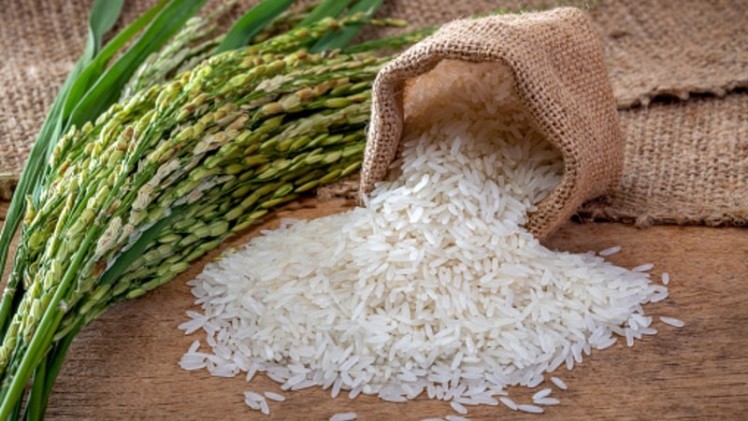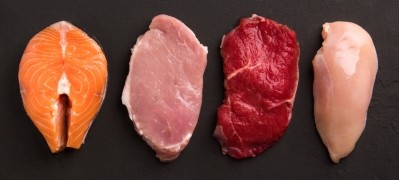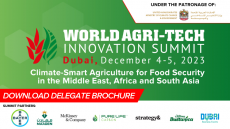‘Critical period’: China looks to secure national food supply by focusing on technology and manpower upgrades

China’s food supply has come under scrutiny ever since the COVID-19 pandemic outbreak hit, and President Xi Jinping’s declaration of ‘war on food waste’ earlier this year as well as recent flooding in the country resulting in rice losses have brought the matter back into the spotlight.
Although rumours of food insecurity have not been formally acknowledged, the country’s National Food and Strategic Reserves Administration (NFSRA) have recently been on a ‘Flourish Grains Flourish Storage’ streak, with the agency announcing plans to focus on science, technology and manpower upgrades over the next five years to ensure local food security.
“The next five years will be a crucial period [for China] to strengthen grain and supply reserves – we will need to revolutionise, develop and innovate, and to do this it is obvious that the role of science, technology and talented manpower are crucial support that is needed,” NFSRA Director-General Zhang Wufeng said at a high-level seminar.
“The entire food system needs to [prioritise] upgrading and deepen understanding of science, technology and operational manpower so as to confidently devise new [strategies] to help food supply flourish.
“We will need to make comprehensive plans to cultivate an innovative system that [can lead to] high-quality development of grain and supply reserves – and here, only the innovative and revolutionary will stand a chance, which is why [we are emphasising on] science, technology and new talents who can master these in order to get good results.”
A major area of focus, given the lessons learnt from COVID-19, will be to upgrade the preparedness and ‘far-sightedness’ of the entire system – which again leads back to the use of technology and will be implemented across three major pillars, said Zhang.
“First is to utilise scientific and technological innovation to reduce food loss and optimise operations in order to comprehensively improve the nation’s ability to react to emergency situations,” he said.
“Next will be to move to quickly promote high-quality food research and projects, including the acceleration of a strong local grain sector to meet consumer needs for high-quality foods; whereas the last will be to improve institutional mechanisms, operational standards, management procedures, business development and promote overall modernisation.”
NFSRA also released draft strategies to strengthen food supply in accordance with these areas, which highlighted technologies such as 5G technology, artificial intelligence, cloud computing and more to be used by the food industry in areas such as granary security and management to strengthen local food supply.
Food woes in China
In early August, massive floods consumed rice fields across Southern China, affecting an estimated 11.2 million tons of food, or 5% of China’s rice, according to local brokerage company ShenWan HongYuan.
The Chinese Ministry of Agriculture and Rural Affairs has maintained that the nation’s crop production can meet local demand despite this, stating that local rice consumption stood at 143 million tonnes and wheat consumption at 125 million tonnes, whereas production for these staples were 210 million tonnes and 134 million tonnes last year.
The Ministry of Emergency Management added that just 1% of cropland was destroyed so the impact on production will be ‘limited’ and an agricultural expert also said that the outlook was ‘cautiously optimistic’.
"I think the floods have not affected the rice production much and the main structure of grain production would continue to be good,” China Agriculture University professor Fan Shenggen told CGTN.
“I'm more worried about the vegetables and meat products, these are areas where we should really put incentives to make sure that producers have access to seeds, to markets and so on.”
Indeed, meat has been mentioned far less in terms of food security despite China facing massive issues with pork supply due to the African Swine Flu attack where it had to cull millions of pigs. According to The Pig Site data, the price of wholesale pork in China was close to CNY50 (US$7.30) per kg in July 2020, as opposed to around CNY25 (US$3.65) per kg in July last year.
China has attempted to keep prices low by importing more pork – a total of 3.5 million tons in 2019, as opposed to 2.1 million tons the previous year, but it is hard to imagine this strategy working for the long term, as pork is very much a staple food in the country, and a system secure in grain but insecure in pork would be hard to satisfy locals.
Food waste
Food waste is China’s other current major food security issue, with even President Xi calling for locals to ‘put an end to shameful food wastage’ earlier this year.
“China needs to maintain a sense or crisis and urgency about food supply and security especially after COVID-19 even if we had a good harvest last year [and can meet consumption],” he said in a public speech.
Xi’s sudden interest in reducing food waste has led to speculation that China’s food supply is actually less secure that the government is making it out to be, especially with laws even currently being discussed to control this.
One of the most controversial is what has been dubbed the ‘N-1’ system, where customers at foodservice establishments would only be allowed to order one less dish than the number of diners present – a system which would be counterintuitive in a country where ‘ordering more’ is a cultural norm representative of hospitality and generousity to guests.
“We would strengthen management of all aspects [to prevent food waste] including grain production, purchase, storage, transport, processing and consumption,” said the National People’s Congress Standing Committee’s Legislative Affairs Commission official Zhang Guilong as per SCMP.
“Specifically, [we would] advocate a reasonable and healthy dining culture and establish a long-term mechanism to stop food waste.”


















